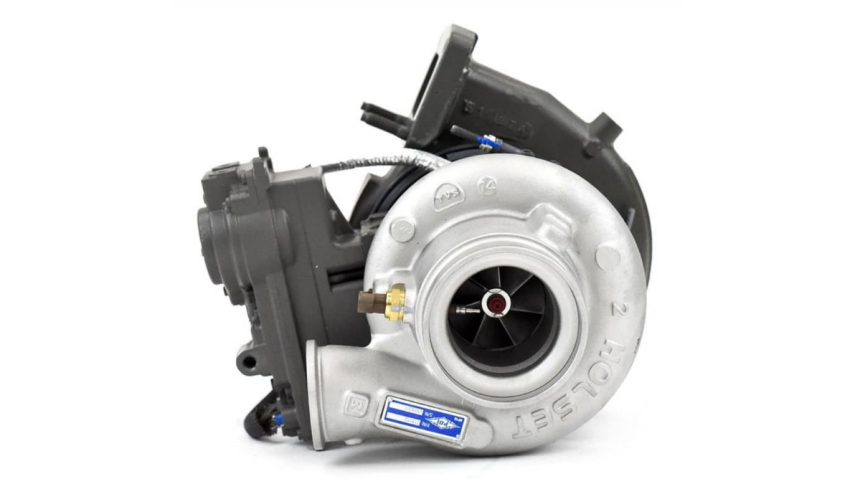What Makes the 12.7 Turbocharger Stand Out?
The Detroit 12.7 turbocharger isn’t just another piece of hardware. It’s a product of deliberate engineering aimed at achieving superior diesel performance. Start with its precision-designed compressor wheel. By optimizing blade geometry, it moves air with remarkable efficiency, reducing drag and improving responsiveness. Pair that with a turbine housing refined to balance flow dynamics under varying load conditions. The result? Faster spool times and consistent pressure delivery, even at high RPMs.
Materials matter too. These turbochargers can withstand the punishing heat of extended heavy-duty operation, thanks to the use of advanced, high-temperature alloys. This durability eliminates common performance bottlenecks like warping or excessive thermal expansion. Some models generate boost pressures exceeding 30 PSI, effectively cramming more air into the engine for higher power yields. It’s a difference you’ll feel on steep climbs or under heavy loads—reliable power right when it’s needed.
In short, the 12.7 turbo system isn’t about gimmicks but delivering measurable, physics-backed gains. Hard to argue with numbers that translate directly into performance.
Essential Upgrades to Reach Full Boost Potential
Stock setups are good. Great, even. But there’s always room for improvement. A popular move in the diesel community is retrofitting variable-geometry technology, offering unmatched control over exhaust flow. Another no-brainer? Upgraded wastegate actuators, which fine-tune pressure management to keep the turbo in its sweet spot.
Want to push beyond? Larger intercoolers become a critical asset. They keep intake temperatures low, maximizing boost without inviting detonation. And don’t forget about reinforced bearings—they’re built to laugh off the stress of cranking the turbo to its limit. But here’s the rub. These upgrades aren’t “plug-and-play” for every 12.7 system. Modifications like custom tuning maps, rerouted plumbing, or even changes to air intake layouts might be part of the equation.
The right components, however, make all the difference. To explore these options, check out a trusted resource for Detroit 12.7 turbo solutions.
The Role of Precision Tuning in Turbocharger Optimization
It’s not just about the physical parts bolted to your engine. Software—and the tuning behind it—plays a pivotal role in maximizing performance. Adjusting ECU parameters like boost targets ensures you’re extracting every ounce of air compression the turbo can deliver. Similarly, dialing in injection timing aligns fuel delivery with the increased airflow, improving combustion and power output. Then there’s the air-fuel ratio, which needs to be tailored to each vehicle’s operating conditions.
Effective tuning tools help bridge the gap. Industry favorites like standalone ECUs or diesel-specific software profiles make recalibration straightforward. Done right, you might see gains of 15-20% in horsepower and torque. The flip side of this boost? Higher thermal and mechanical stress on components. Balancing that equation takes skill—but when achieved, it transforms how the 12.7 operates, especially under heavy pulls.
A turbo is only as good as its configuration. Don’t skimp here.
Maintenance Habits That Keep the Turbo Alive
Performance isn’t worth much if it’s short-lived. And your 12.7 turbo requires attention to give its best over the long haul. First, prioritize regular oil changes. Clean, high-grade oil reduces wear on critical components like turbine shafts and bearings. Complement that with upgraded filtration systems for both oil and air to block contaminants that degrade performance quicker than you’d think.
Temperature management is equally critical. A proper cooldown period, after long-haul drives, helps prevent heat-soak damage. Neglect this, and your turbo can warp, creating inefficiencies. Periodic inspections are your safety net. Check for shaft play that signals internal wear or oil leaks that could spell trouble.
Invest in a simple monitoring setup—boost gauges, EGT meters, and oil pressure indicators—to keep tabs on performance in real time. Maintenance isn’t flashy. But neglecting it costs you both time and money. Simple as that.
Fleet-Level Strategies for Turbocharged Efficiency
Installing 12.7 turbos across a fleet of diesel vehicles? Smart move. But good tech only works when paired with operational consistency. Standardize maintenance procedures across all trucks. Teach technicians exactly how to handle the quirks of these turbo systems—introducing a uniform skill set that minimizes downtime.
Another layer of efficiency? Keeping an inventory of high-use parts like actuators or bearings. Waiting for a replacement can be a killer, especially when every hour off the road means lost profits. As for return on investment, the benefits are clear. A properly integrated 12.7 system delivers improved fuel efficiency, fewer breakdowns, and measurable reductions in repair frequency.
Track the results. Fuel costs per mile and average output metrics pre- and post-upgrade are your KPIs. Overlook this step, and you’ll never know how much you gained.
Wrapping It All Together: Where to Focus Now
Turbocharging a diesel engine is a game of steps. Start small—address maintenance schedules, tweak your setup, and measure results from a single vehicle. Expansion comes when you know the upgrades deliver. Turn to experts and let them assess your system, ensuring nothing is overlooked. With a meticulous approach, the Detroit 12.7 turbo transforms from an upgrade into an edge. Take action now.
Lynn Martelli is an editor at Readability. She received her MFA in Creative Writing from Antioch University and has worked as an editor for over 10 years. Lynn has edited a wide variety of books, including fiction, non-fiction, memoirs, and more. In her free time, Lynn enjoys reading, writing, and spending time with her family and friends.















